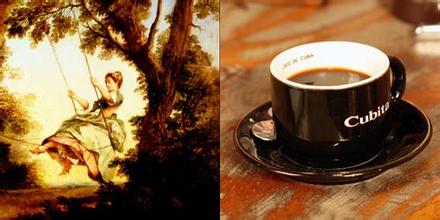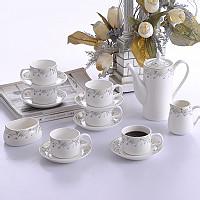Introduction to the story characteristics of Ethiopian boutique coffee beans
Introduction to the story characteristics of Ethiopian boutique coffee beans
Grade of Ethiopian coffee:
Ethiopia washed coffee Yega Chuefei G1 G2
The highest levels of Sidamo (Yirgacheffe, Sidamo) are level 2 and level 3 (G2, G3).
Most of the sun-processed coffee in eastern Ethiopia are grade 4 or grade 5 (G4, G5).
In many cases, level 4 coffee is marked as level 5 in order to reduce taxes. At present, the grading is not uniform and messy, because there are also Grade I and II (Grand G2) Yirga Cheffe processed by sun processing, but the highest grade of Harald (Harar) is Grade IV (G4).
The dry aroma of Gemma coffee powder: there is a strong, raging incense wild nostrils, mixed with a little faint earthy smell, compared with the Indonesian Karosi aroma is not so long-lasting.
French pressure pot follicles: there are rich and long-lasting brown grease, taste mild and smooth, clean washing, there is a gentle sour, a little sour.
Washed Ethiopian wild djimmahji Mamoca coffee, under the wild appearance, is the gentle heart; it is indeed a relatively high-quality low-acidity coffee.
Sidamo
Sidamo sidamo
"Ethiopian Sidamo" is a type of single origin and grows in Arabica coffee in Ethiopia's Sidamo province. Like coffee in most African countries, Ethiopian Sidamo is characterized by small gray beans, but characterized by its rich, spicy, wine or chocolate-like taste and floral aroma. The most distinctive flavors found in all Sidamo coffee are lemon and citrus with bright and crisp acidity. Sidamo Coffee includes Yirgachefe Yega Snow Coffee and guji Coffee, both of which are of high quality.
Ethiopia is the hometown of Arabica coffee, and it is in the forests of Kaffa that you can see wild Arabica coffee. In Ethiopian, coffee is called "Bun" or "Buna". Coffee beans (coffeebean) may be translated from "Kaffa Bun". Arabica coffee has long been found in the Harald area, probably from the Kafa forest.
Essel coffee is processed by two processing methods: sun and water washing. The flavor of coffee processed by different processing methods is very different. Generally speaking, the alcohol thickness and soil taste of washed Sidamo, Yirgacheffe and Limmu coffee are slightly lower, and the taste of sun-processed coffee is more wild. But Essex coffee may taste different from batch to batch, which requires more cup tests in order to find really good coffee.

Important Notice :
前街咖啡 FrontStreet Coffee has moved to new addredd:
FrontStreet Coffee Address: 315,Donghua East Road,GuangZhou
Tel:020 38364473
- Prev

Colombia coffee variety-growing region-flavor description-taste treatment-grinding scale-estate introduction
The first part is the triangle in the background, which symbolizes the Andes and also implies that the Arabica coffee in Colombia coffee is grown in high-altitude mountainous areas. As we all know, Colombia's coffee production is mainly distributed in three mountain ranges arranged in Sichuan, which are part of the Andes. Depending on the geographical environment and climate, coffee in different regions
- Next

Description of proportion and Flavor of Golden Manning Powder and Water introduction of varieties produced by taste treatment
The proportion of powder and water used in the bean uncle coffee roaster is 1:16, if you like the SCAA standard, you can change it to 1:18, this change will reduce the concentration of coffee. That is, if 500ml water is injected into the French kettle, the amount of coffee beans used is 32 grams or 28 grams.
Related
- Detailed explanation of Jadeite planting Land in Panamanian Jadeite Manor introduction to the grading system of Jadeite competitive bidding, Red bid, Green bid and Rose Summer
- Story of Coffee planting in Brenka region of Costa Rica Stonehenge Manor anaerobic heavy honey treatment of flavor mouth
- What's on the barrel of Blue Mountain Coffee beans?
- Can American coffee also pull flowers? How to use hot American style to pull out a good-looking pattern?
- Can you make a cold extract with coffee beans? What is the right proportion for cold-extracted coffee formula?
- Indonesian PWN Gold Mandrine Coffee Origin Features Flavor How to Chong? Mandolin coffee is American.
- A brief introduction to the flavor characteristics of Brazilian yellow bourbon coffee beans
- What is the effect of different water quality on the flavor of cold-extracted coffee? What kind of water is best for brewing coffee?
- Why do you think of Rose Summer whenever you mention Panamanian coffee?
- Introduction to the characteristics of authentic blue mountain coffee bean producing areas? What is the CIB Coffee Authority in Jamaica?

